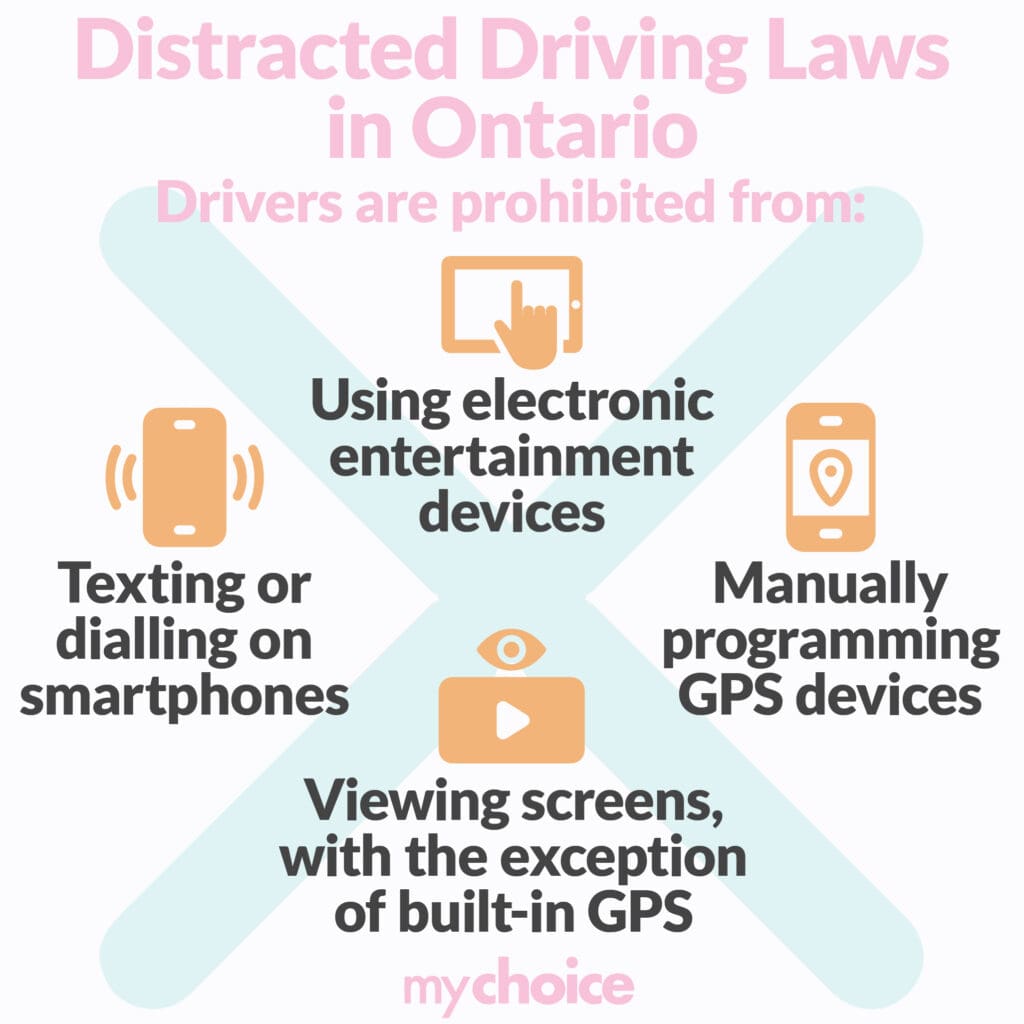Driving can sometimes feel monotonous, especially during long commutes or traffic jams. Many drivers turn to music as a source of entertainment and relaxation. But what if your car stereo isn’t functioning? The idea of using headphones might cross your mind. But the question arises: “Is it illegal to drive with headphones in Canada?”. Read on to learn the answer to that question and to find out what implications this can have on your car insurance policy.
Understanding Distracted Driving in Ontario
Before diving into the specifics of wearing headphones, it’s essential to understand Ontario’s distracted driving laws. According to these laws, drivers are prohibited from:
- Texting or dialling on smartphones or wireless devices (except for emergency calls to 911).
- Using electronic entertainment devices like gaming systems or tablets.
- Viewing screens, with the exception of built-in GPS.
- Manually programming GPS devices (voice commands are exempt).

The Dangers of Distracted Driving
Distracted driving is a significant concern, contributing to a significant percentage of fatal and serious collisions. Transport Canada highlights activities such as texting, talking, eating, drinking, and using entertainment or navigation systems as primary distractions. Penalties for distracted driving are stringent across provinces. For instance, in B.C., distracted driving results in a fine of $543 and four demerit points. A second offence within 12 months can lead to a year-long license suspension.
Can You Drive with Headphones On in Ontario?
While Ontario’s distracted driving laws are clear about the above activities, they are a bit ambiguous when it comes to headphones. Technically, it’s not illegal to drive with headphones in Ontario. However, wearing headphones can be considered a contributing factor if you’re pulled over for distracted or careless driving.
The Ontario government permits drivers to wear a single wireless headphone or earpiece. Additionally, drivers can communicate using lapel buttons and Bluetooth devices. But, with these varying rules, it’s understandable why some drivers might find the regulations confusing.
Risks Associated with Driving with Headphones On
Even if it’s not strictly illegal, driving with headphones poses several risks:
- Reduced Hearing: Essential auditory cues, like sirens from emergency vehicles, might be missed, leading to potential accidents and fines.
- Insurance Implications: If you are involved in an accident while wearing headphones, insurance agencies might not cover the damages, even if you’re not at fault.
Headphone Laws Across Canada
Ontario isn’t the only province with regulations concerning headphones while driving. Here’s a brief overview of rules in other provinces:
- British Columbia: Drivers can wear one headphone for communication purposes only. Listening to music through headphones is illegal. A fine of $368 applies for wearing two headphones.
- Alberta: No specific laws about headphones while driving.
- Saskatchewan: Experienced drivers can use wired headphones.
- Manitoba: Similar to Ontario, distracted driving can lead to a $672 fine.
- Quebec: Strict laws against mobile phones and headphones. Wearing two headphones can result in a $100 to $200 fine.
- New Brunswick: No specific rules about headphones.
- Nova Scotia: No laws regarding headphones while driving.
- Prince Edward Island: “Stage 1” and “newly-licensed” drivers cannot use headphones. Fines range from $575 to $1,275.
- Newfoundland and Labrador: No laws against headphones or headsets.
Other provinces and territories, including Manitoba, New Brunswick, Newfoundland and Labrador, Nova Scotia, the Northwest Territories, Nunavut, and Yukon, do not have specific headphone laws. However, it’s essential to be aware of these regions’ general distracted driving regulations.
Final Thoughts
While it might be tempting to pop in headphones and lose yourself in music, it’s crucial to prioritize safety. Missing out on a favourite playlist is a small price to pay for ensuring your safety and that of others on the road.








